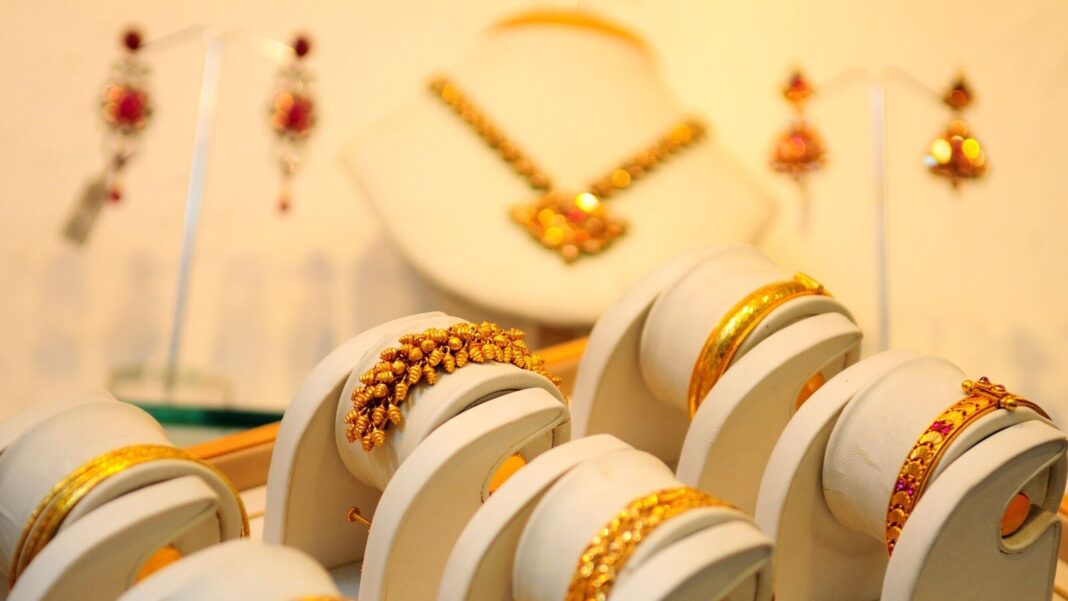With a robust brand and a multichannel approach, PNG is well-positioned to capitalize on India’s growing appetite for jewellery. However, market analysts urge caution, pointing out that the sector carries inherent risks, especially for new investors.
Outpacing competitors
An analysis of key financial metrics among leading jewellery retailers reveals that PNG has outperformed its competitors across several critical performance indicators.
Between FY22 and FY24, the company reported a remarkable compound annual growth rate (CAGR) of 54.6% in revenue and 39.8% in operating profit (Ebitda). This growth significantly surpasses industry heavyweights like Kalyan Jewellers, Senco Gold, and Thangamayil Jewellery, underscoring PNG’s ability to capture market share and propel sales growth.
Read this | Are India’s top 3 jewellery stocks breaking out? These charts hold a clue.
Revenue per store is another area where PNG excels. At ₹169.7 crore per store, PNG’s sales are far higher than Kalyan Jewellers ( ₹77.3 crore), Senco Gold ( ₹33 crore), and Thangamayil Jewellery ( ₹63.8 crore).
“Post-IPO, PNG Jewellers aims to expand its store count to 60-65 in Maharashtra within two years, solidifying its position as the state’s number one player,” said Saurabh Gadgil, managing director of PNG Jewellers, in an interaction with Mint. “This growth will be accompanied by a focus on consolidating its presence in metros, tier 1, and tier 2 cities, with a target of growing its top line to ₹12,000- ₹13,000 crore.”
PNG’s working capital efficiency is another key differentiator, with 51 working capital days, compared to Kalyan Jewellers’ 131 days, Senco Gold’s 160 days, and Thangamayil’s 112 days. This leaner working capital cycle improves cash flow and reduces financing costs.
Also read | Is Bajaj Housing Finance IPO a gateway to India’s growing housing market?
Additionally, PNG enjoys superior profitability, boasting a return on equity (RoE) of 28.9% and a return on capital employed (RoCE) of 27.3%. In comparison, Kalyan Jewellers posts an RoE of 14.2% and RoCE of 15.7%, Senco Gold trails with 13.3% and 12.5%, while Thangamayil Jewellery registers 25% and 20.3%.
Regional concentration and expansion woes
While PNG has enjoyed significant financial success, its regional concentration may limit its growth potential in the long run. Currently, all of PNG’s stores are concentrated in western India, particularly in Maharashtra. In contrast, competitors like Kalyan Jewellers and Senco Gold have a more geographically diverse presence across the country.
However, it has ambitious expansion plans. “Looking ahead, the company plans to expand to neighboring states like Madhya Pradesh, Chhattisgarh, Jharkhand, and Uttar Pradesh over the next five to seven years, with a goal of becoming the largest player in western and central India,” Gadgil highlighted.
Despite its aggressive expansion plans, PNG’s closure of four stores during FY23-24 has raised concerns. While Gadgil attributes this to strategic relocation efforts, investors may be worried about the company’s ability to maintain its growth trajectory.
“We closed some stores, but it was a strategic relocation to better locations, often with smaller store sizes. This aligns with our larger objectives, ensuring we remain relevant in a changing market,” Gadgil added.
According to Master Capital Services, a financial services firm, to improve its stores efficiency metrics, the company is analysing and focusing on aligning its expansion plans with regional sales forecasts, site visibility, demographics, accessibility, foot traffic, addressable market, lease rentals, etc.
Also read | FirstCry IPO: Cracking the baby business code
Moreover, the company does not own the trademark for their flagship “PNG” brand and pays royalty fees which has remained consistent at ₹5.9 crore for the past three years, as per the red herring prospectus.
Rising costs and slow demand
Meanwhile, the global jewellery market is facing headwinds with consumption down nearly 19%, year-on–year during the April-June period, the World Gold Council data revealed. India’s consumption too took a hit as record gold prices weighed heavily on Indian gold jewellery demand–falling 17% during the same period. This volatility underscores the inherent risks associated with the sector.
“Caution is advised for investors, given the volatility in the gold market. While gold remains a hedge against economic uncertainty, the jewellery segment may face pressure on profit margins in the near term,” noted Atul Parakh, chief executive of Bigul, an online investment firm. “A sound, balanced approach is advisable, considering both gold’s safe-haven status and the challenges approaching gold-related industries,” he added.
However, the PNG’s management remains optimistic and has implemented strategies to mitigate risk.
“Margins in our industry primarily come from making charges, with our current gross margin at the store level standing at 13-14%. We intend to mitigate gold price risks through strategic hedging using gold metal loans and leveraging the Multi Commodity Exchange (MCX),” Gadgil explained.
Also read | How Tanishq broke into the bridal jewellery market in India
Going forward, lower gold import duties are poised to revive jewellery demand in India, especially ahead of the festival season.
Opportunities in a growing market
Opportunities abound: Western India’s jewellery market is booming, with Maharashtra leading the charge and expected to reach $16.9 billion by 2027-28. Moreover, the Indian jewellery market is undergoing a significant transformation, with organized retail gaining significant ground. The market share of organized players is projected to increase from an estimated 38% in 2023-24 to 43% in the next four years.
PNG Jewellers looks well-placed to capitalize on the shift in consumer preferences towards branded and organized retailers: it plans to leverage its existing customer base of over 3 million to boost engagement and customer loyalty.









